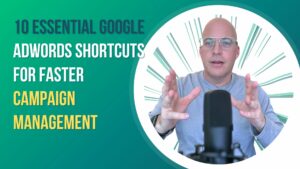SEO quick wins refer to strategies and tweaks that can be implemented relatively quickly, yielding immediate or near-immediate improvements in search engine rankings. These wins are pivotal for businesses as they can boost web traffic, user engagement, and conversions. While SEO is often viewed as a marathon, these quick tactics serve as sprints that deliver rapid results, granting companies competitive advantages and helping them gain or maintain momentum in the online space.
The Balance Between Quick Wins and Long-term Strategies
While the allure of immediate results is undeniable, it’s equally important to maintain a balanced approach in one’s SEO. Relying solely on quick fixes can lead to a volatile online presence, susceptible to algorithm changes or emerging competition. Long-term strategies, on the other hand, lay the groundwork for sustainable online growth and reputation. Think of quick wins as low-hanging fruits—easy to pluck and enjoy- but for an orchard to thrive requires consistent care, pruning, and foresight. The optimal approach melds the immediacy of quick wins with the foresight of long-term planning.

Technical SEO Improvements
Website Speed Optimization
- Compressing Images
Compressing images reduces their file size without substantially compromising quality, allowing them to load faster on web pages. This improves user experience and boosts search engine rankings, as page speed is a known ranking factor.
- Minimizing Code
By removing unnecessary characters and whitespace from the website’s code (HTML, CSS, JavaScript), you can decrease the page’s file size and increase its loading speed. This practice, known as minification, streamlines the code, leading to quicker page rendering and enhanced user satisfaction.
- Using Content Delivery Networks (CDNs)
CDNs are networks of servers located globally that store cached versions of web content. When a user accesses a site, the CDN delivers the content from the nearest server, drastically reducing load times. This ensures consistent and rapid content delivery to users regardless of location.
Mobile Optimization
- Responsive Design Implementation
Responsive design ensures a website’s layout and elements adjust seamlessly across various screen sizes and devices. Implementing this design ensures that users have an optimal viewing experience, whether on a desktop, tablet, or smartphone, reducing the likelihood of site abandonment.
- Mobile Page Speed Enhancements
Mobile users often expect faster load times than desktop users. By optimizing elements specifically for mobile, like reducing file sizes or utilizing adaptive image serving, websites can offer quicker page loads, improving user experience and search engine rankings on mobile searches.
Fixing 404 Errors
404 errors occur when a page on a website can’t be found, typically due to broken links or removed content. Addressing these errors is crucial as they can negatively impact user experience, potentially losing trust or credibility. Search engines also take note of these errors, and excessive 404s can harm a website’s ranking.
XML Sitemap Updates
An XML sitemap is a roadmap of a website’s structure, guiding search engines to all its essential pages. Keeping this sitemap updated ensures search engines can efficiently crawl and index new or modified content, subsequently improving the visibility and ranking of these pages in search results.
Content Enhancements
Refreshing Outdated Content
- Updating Facts and Figures
Stale statistics or outdated facts can undermine a website’s credibility. Regularly updating this data ensures accuracy, instills trust in the readers, and signals to search engines that the content is current and relevant.
- Incorporating New Trends
Incorporating new industry trends or recent developments into existing content can reinvigorate its relevance. This can attract both returning and new readers, demonstrating that the website is in tune with current events or shifts in the industry.
Optimizing Meta Titles and Descriptions
Meta titles and descriptions are concise summaries of a web page’s content displayed in search engine results. Well-crafted meta titles and descriptions can significantly boost click-through rates, as they give potential visitors a clear idea of what to expect, making the content more enticing.
Enhancing Content Relevance with Latent Semantic Indexing (LSI) Keywords
LSI keywords are terms and phrases semantically related to a topic. These keywords can enhance content relevance, offering readers a more comprehensive understanding of the subject. Search engines use LSI to assess content depth and relevancy, which can influence rankings.
Ensuring Content Depth and Coverage on Core Topics
Content that deeply explores a topic, covering multiple facets and answering common questions, tends to perform better in search results. Such in-depth content positions the website as an authoritative source, encouraging longer visitor engagements and signaling to search engines the high informational value of the page.

Backlink Opportunities
Reclaiming Lost Backlinks
Over time, some websites linking to your content might remove those links or undergo structural changes that result in link loss. Identifying and reaching out to these sites to reestablish those backlinks can quickly regain lost referral traffic and restore the SEO benefits those links provide.
Utilizing Unlinked Brand Mentions
Occasionally, online platforms or articles might mention a brand without linking back to its website. Identifying these unlinked mentions and requesting the site owners to add a link can secure additional backlinks, enhancing the site’s authority and potentially driving more traffic.
Competitor Backlink Analysis for New Opportunities
One can uncover untapped linking opportunities by examining where competitors are getting their backlinks. This analysis can reveal industry-relevant sites or platforms that might be amenable to linking to your content, allowing you to expand your backlink profile and improve your site’s authority.
User Experience (UX) and Engagement
Reducing Bounce Rate
- Enhancing Visual Appeal
A website’s visual design can greatly influence a visitor’s first impression and willingness to stay. By adopting a modern, clean, and intuitive design, sites can captivate visitors, making them more likely to explore content further and reduce the chances of immediate exits.
- Clear Call to Actions (CTAs)
CTAs guide visitors on what to do next, whether reading another article, signing up for a newsletter, or purchasing. Prominent and clear CTAs can engage users more effectively, encouraging them to take desired actions and decreasing the bounce rate.
Improving Website Navigation
A website’s navigational structure should be intuitive and user-friendly. Streamlining menus, using descriptive labels, and ensuring a logical flow can make it easier for visitors to find what they’re looking for, enhancing their overall experience and increasing their time on the site.
Incorporating Engaging Media (Videos, Infographics)
Engaging media like videos and infographics can capture visitor attention and convey information digestibly. These elements break up text-heavy content and cater to diverse learning preferences, making content more accessible and enhancing user engagement.

Local SEO Boosts
Claiming and Optimizing Google My Business Listings
Google My Business (GMB) is a platform that allows businesses to list their establishment on Google Maps and local search results. Claiming and optimizing this listing with accurate details, images, and operational hours can enhance visibility for local searches and drive more foot traffic or local customer inquiries.
Encouraging Customer Reviews
Reviews play a pivotal role in local SEO. Positive feedback on platforms like GMB, Yelp, or industry-specific sites can boost a business’s credibility and ranking in local search results. Encouraging satisfied customers to leave reviews and addressing negative feedback appropriately can greatly benefit a business’s online reputation and SEO.
Local Citation Building
Local citations refer to mentions of a business’s name, address, and phone number (NAP) on other websites, directories, or platforms. Consistent and accurate citations across various online sources can reinforce a business’s legitimacy and boost its rankings in local search results. Pursuing citation opportunities in local directories or industry-specific platforms can be a powerful strategy for enhancing local SEO

Social Signals
Encouraging Social Sharing
When content is shared widely on social platforms, it can increase visibility, drive traffic, and indirectly influence search engine rankings. Businesses can amplify their reach and impact on social media by integrating social sharing buttons prominently on web pages and producing share-worthy content.
Optimizing Open Graph Tags for Improved Display on Social Platforms
Open Graph tags dictate how content appears when shared on social platforms like Facebook. By customizing these tags, businesses can ensure that titles, descriptions, and images are displayed optimally, making shared links more appealing and increasing the likelihood of engagement.
Monitoring and Feedback
Using SEO Tools for Rapid Feedback
SEO tools, such as Google Analytics, SEMrush, or Moz, offer valuable insights into website performance. Regularly consulting these tools can provide feedback on which strategies are working, what content is driving traffic, and where there might be room for improvement.
Adjusting Strategies Based on Performance Metrics
SEO is an ongoing effort, and strategies may need tweaking over time. Businesses can identify areas of concern or opportunity by closely monitoring performance metrics, such as organic traffic, bounce rate, or conversion rates, allowing them to pivot their strategies to achieve better results.
SEO Sprints and Marathons: The Road Ahead
Harnessing the power of SEO encompasses both rapid implementations and long-term strategies. Businesses can achieve short-term gains by optimizing technical aspects, refreshing content, seeking backlink opportunities, and enhancing user experiences. But the true essence of SEO mastery lies in a balance: capturing the immediate benefits while laying a sustainable foundation for future growth. Monitoring tools and metrics act as compasses, guiding and refining strategies to ensure that both the sprints and marathons of the SEO journey lead to tangible success.
Frequently Asked Questions
Why is SEO Important for My Business?
SEO is pivotal because it determines how your website ranks on search engines. A higher ranking increases visibility, translating to more clicks, increased website traffic, and potential business conversions.
How Long Does It Take to See SEO Results?
The duration varies. Some changes, like technical optimizations, may yield quicker results. However, most SEO strategies, especially those related to content and link-building, typically show noticeable results in 3-6 months.
Are Backlinks Still Relevant for SEO?
Yes, backlinks remain a significant factor in determining a site’s authority and rank. However, the quality, not quantity, of backlinks matters most.
How Does Mobile Optimization Affect SEO?
With the rise of mobile searches, search engines prioritize mobile-friendly sites. Hence, ensuring your website is optimized for mobile devices can positively impact your SEO ranking.
Is Local SEO Different from Regular SEO?
While the core principles remain the same, local SEO optimizes a business’s online presence for local searches. This includes strategies like optimizing for location-based keywords and managing local business listings.
How Frequently Should I Update My Website’s Content for SEO?
Regular content updates signal that your site is active and relevant. While there’s no fixed frequency, it’s beneficial to update content whenever there are significant industry changes, outdated information, or opportunities to improve existing content.
References
Google Search Central – https://developers.google.com/search/docs/beginner/get-started
Moz – https://moz.com/beginners-guide-to-seo
SEMrush – https://www.semrush.com/blog/what-is-seo/
The Importance of Backlinks in SEO. Neil Patel Digital. https://neilpatel.com/blog/backlinks/
BrightLocal – https://www.brightlocal.com/learn/what-is-local-seo/
Ahrefs.- https://ahrefs.com/blog/seo-basics/








